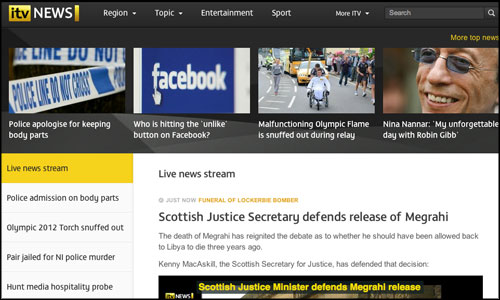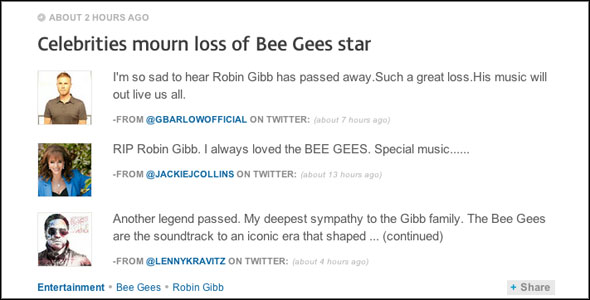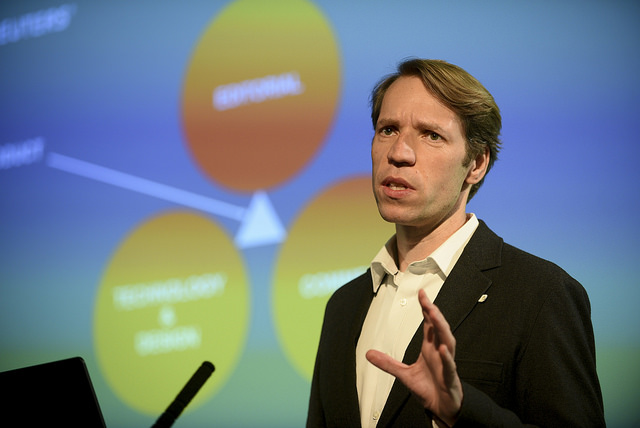When ITV News launched a new website two months ago the site started presenting news in a way that was radically different from before.
Made by Many, the company which re-invented the site, wanted to “make a news service that answered the question: ‘What would news be like if we had networked digital media (and digital cameras and phones and laptops) but there had never been newspapers or broadcast TV news programmes?'”.
They came up with a “digital native” news format that includes tweets and other social media content from the broadcaster’s correspondents, experts and eye witnesses.
Jason Mills, editor of web development for ITV News – who is speaking at news:rewired – full stream ahead in July – told Journalism.co.uk:
The thinking behind the site is that it’s about news now. News is a live process, news continuously comes in and stories develop the whole time. So what we are trying to do is to tell that news in real time.
People now are used to consuming content in a stream, from Twitter to Facebook timelines, and we wanted to take that concept and adapt it to all news, not just a particular story, such as Leveson.
And the result? A simple, effective design where “every page is a homepage”, according to journalism academic Paul Bradshaw.
A great example is this story of the death of Robin Gibb of the Bee Gees, which combines tweets from singers Gary Barlow and Lenny Kravitz, TV footage and a written statement from the former Bee Gees manager. It appears more like a curated Storify than a traditional copy-only news story.
Mills, who is responsible for the editorial content of the national news part of the site, explained how it is the whole of ITV News that contributes to the new live stream site, not simply a team of web journalists.
We have a small number of curators to the site and they are curating content, the vast majority of which comes from our correspondents, our producers in the field, and the news desks.
The curators are then using things like Twitter to add to the telling of that story as well.
Twitter is used in a variety of ways, including adding tweets from the broadcaster’s reporters. “For example, from a court case when you are trying to break the verdict, Twitter is often the best way now,” Mills said.
Twitter is a fantastic way of adding value to existing stories. What are people saying out there, what is the community saying, what are experts saying out there?
It is also used to bring in tweets from “opinion formers, expert analysis, eye witnesses, anyone that can add to the actual telling of the story”.
If people are contributing to the narrative of a story on Twitter then we will look to bring a select number of those tweets into the site and make clear that they are tweets and who they are coming from.
Mills explained that they think of the component parts of the narrative with stories “told over a linear period of time from the breaking point to what is the story to the reaction to it and the analysis at the end”.
They are then organised on the site with a series of headlines down the left-hand side of the site and tags to allow readers to explore the story and site and “dig deeper within this continuous stream of news”.
ITV News is one of a number of news outlets pioneering the live stream approach to news, also including the Wall Street Journal. To hear about approaches from Jason Mills from ITV News and Raju Narisetti from the Wall Street Journal, book tickets for just £130 (+VAT) for news:rewired – full stream ahead on 13 July.
You can also hear from Jason Mills in this Journalism.co.uk podcast on how a social media community can shape the news agenda.




